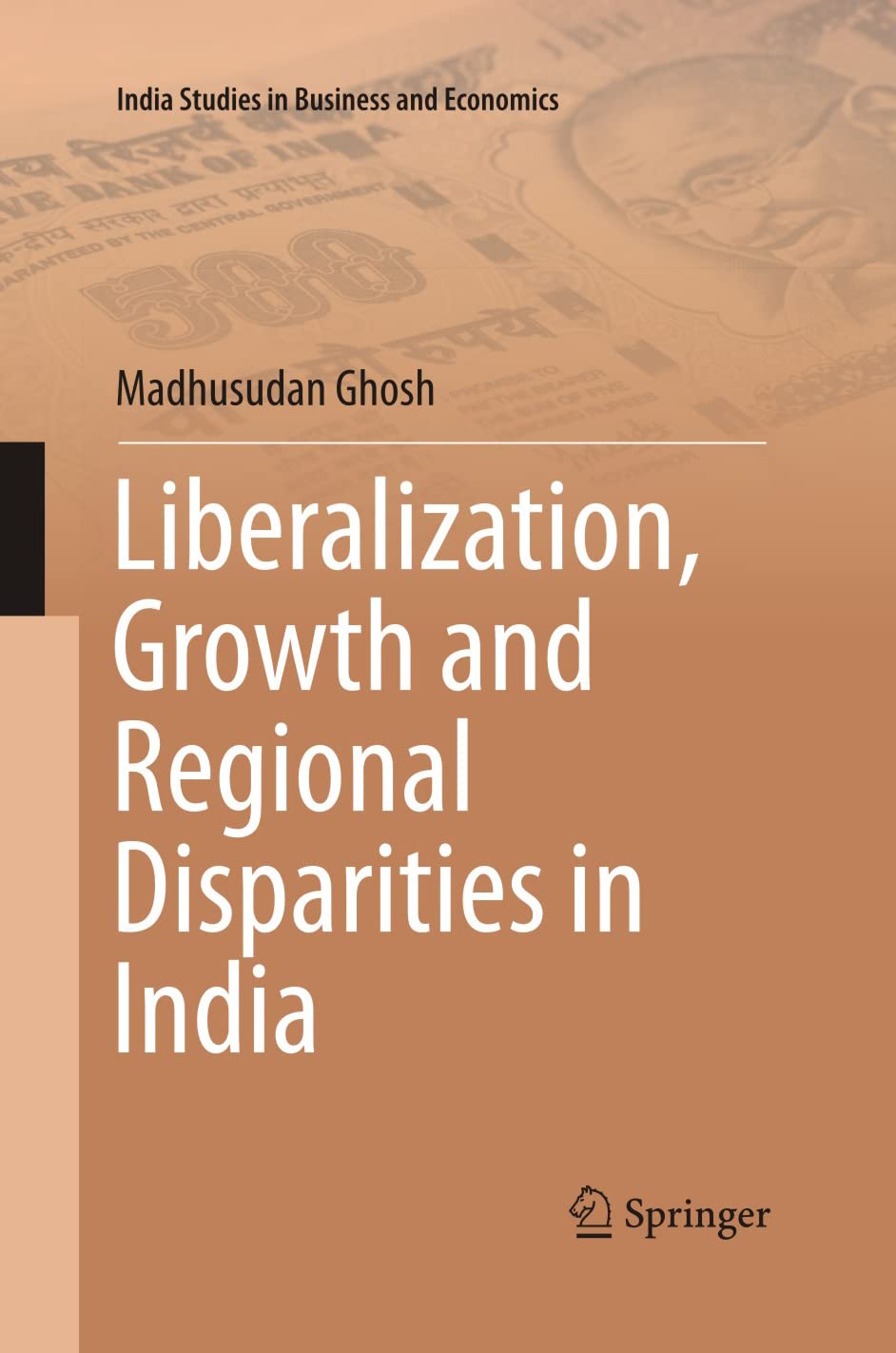Liberalization Growth and Regional Disparities in India
Liberalization Growth and Regional Disparities in India is backordered and will ship as soon as it is back in stock.
Couldn't load pickup availability
Genuine Products Guarantee
Genuine Products Guarantee
We guarantee 100% genuine products, and if proven otherwise, we will compensate you with 10 times the product's cost.
Delivery and Shipping
Delivery and Shipping
Products are generally ready for dispatch within 1 day and typically reach you in 3 to 5 days.
Book Details:
-
Author: Madhusudan Ghosh
-
ISBN: 9788132239871
-
Language: English
-
Edition: 2022
-
Pages: 242
-
Cover: Hardback
-
Sale Territory: This edition may not be sold outside India
- Publisher: Springer
About the Book:
This book provides a detailed evaluation of India's economic performance against the backdrop of the remarkable progress made by the Indian economy over the last two decades, especially after the economic reforms in the early 1990s. It critically examines the country's development across both income and non-income dimensions, assessing national, state, and sectoral levels of growth.
The book looks into regional economic growth and the inequality in income stemming from key sectors such as agriculture, industry, and services. Despite the agricultural sector's declining contribution to the Gross Domestic Product (GDP), it gives significant attention to agricultural production, analyzing the impact of agricultural reforms and their role in spatial integration of food grain markets.
Further, the study sheds light on rural poverty in India, exploring trends in employment, growth inclusivity, and the trickle-down process. It also evaluates the role of microfinance as a tool for financial inclusion and its impact on the socio-economic conditions of rural households.
An important feature of the book is its rigorous application of advanced econometric methods to analyze regional disparities between the post-reform and pre-reform periods. The book concludes with an assessment of the relative performance of fifteen major states of India, focusing on key indicators like education, health, and human development.
This book is a comprehensive resource for policymakers, researchers, and anyone interested in understanding India's economic growth, regional inequalities, and the path toward inclusive development.





